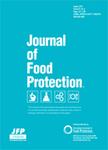版权所有:内蒙古大学图书馆 技术提供:维普资讯• 智图
内蒙古自治区呼和浩特市赛罕区大学西街235号 邮编: 010021

作者机构:Univ Georgia Ctr Food Safety & Qual Enhancement Expt Stn Griffin GA 30223 USA Georgia Inst Technol Environm & Mat Lab Atlanta GA 30087 USA
出 版 物:《JOURNAL OF FOOD PROTECTION》 (食品保护杂志)
年 卷 期:1999年第62卷第5期
页 面:431-437页
核心收录:
学科分类:0832[工学-食品科学与工程(可授工学、农学学位)] 08[工学] 0836[工学-生物工程]
主 题:抗体 细菌/免疫学 抗原 细菌/免疫学 生物传感技术 鸡/微生物学 集落计数 微生物 食品微生物学 胶体金 鼠伤寒沙门菌/免疫学 鼠伤寒沙门菌/分离和提纯 动物 人类
摘 要:An integrated optic interferometer for detecting foodborne pathogens was developed. The interferometer is a planar waveguide with two thin antibody-coated channels of immunochemically selective agents that interact with antigen molecules. One channel is coated with antibody to Salmonella as a sample, and the other is coated with human immunoglobulin G as a reference channel by using reductive amination. Salmonella was introduced onto the sensing channels through the flow cell on the channels. Phase shift (pi) generated by refractive index variation, as determined by interfering the perturbed sample channel with an unperturbed reference channel and observing the fringe shift, was used for detection. Salmonella Typhimurium (heat-treated or boiled) was detected by binding to antibody against Salmonella common structural antigen immobilized on a silane-derived sensor surface at concentrations in the range of 1 x 10(5) to 1 x 10(7) CFU/ml. Salmonella (1 x 10(7) CFU/ml) mixed with Escherichia coli (1 x 10(7) CFU/ml) were readily detected without any decrease in sensitivity by the direct assay. Application of a sandwich assay with a second antibody or a gold-conjugated antibody increased the detection limit to 1 x 10(5) CFU/ml within a 10-min reaction time. Various methods for the immobilization of the capture antibody to the biosensor channels were compared. The greatest binding response was observed in a direct reductive amination method with a long reaction period and increased the detection limit of direct binding of Salmonella antigen to 1 x 10(4) CFU/ml. The biosensor was able to detect Salmonella Typhimurium in chicken carcass wash fluid originally inoculated at a level of 20 CFU/ml after 12 h of nonselective enrichment. The planar optic biosensor shows promise as a fast, sensitive, reliable, and economical means of detecting food pathogens in the future.